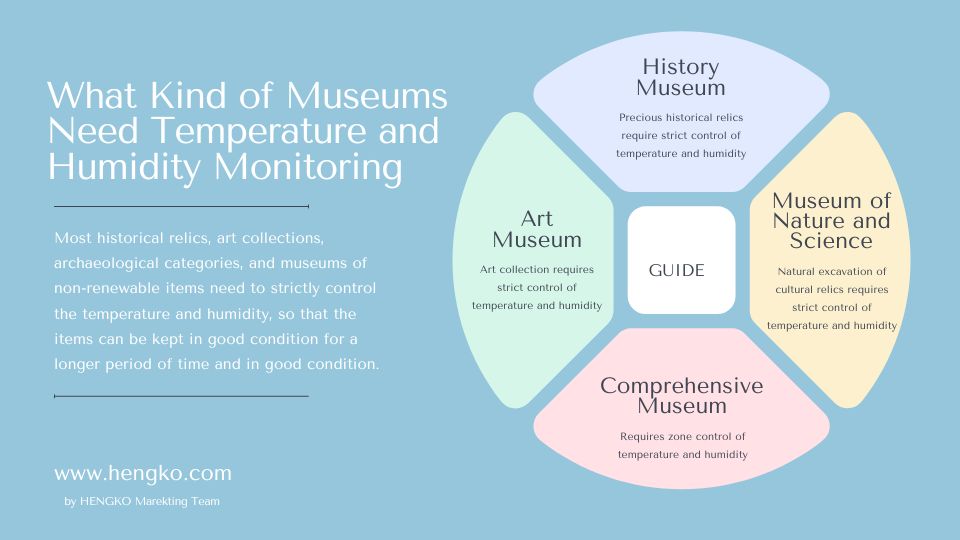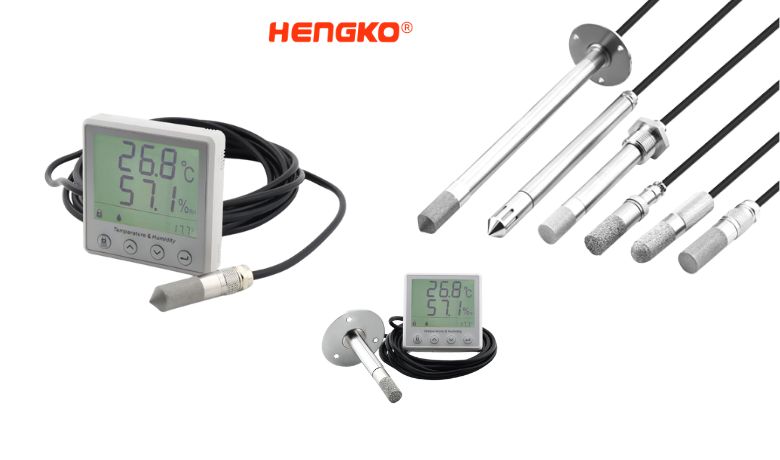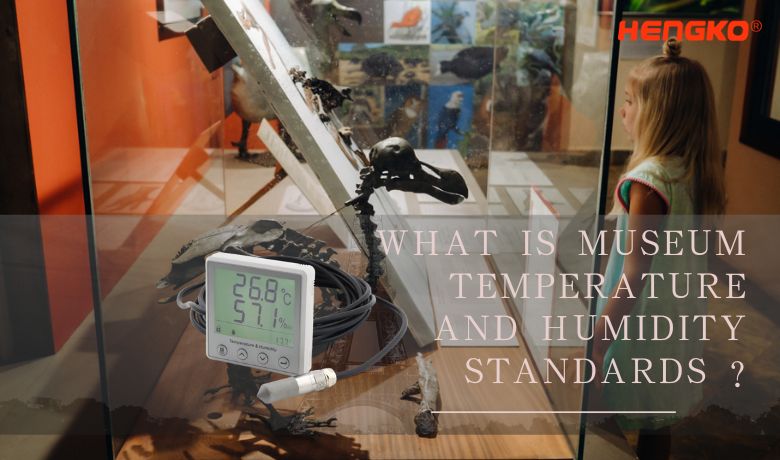What is Museum Temperature and Humidity Standards ?
This question may be bothering you too. as follow is some our idea and advice to control the temperature and humidity for the museum, hope it will be help for you.
- ) Why Is It Necessary to Control the Temperature and Humidity of Museums?
1.Do you know The influence of temperature on cultural relics is mainly reflected in the thermal expansion and cold contraction when the ambient temperature difference is large. When temperature and environmental factors such as humidity, light, oxygen, insects and mildew in the environment act together, which often plays an accelerated and catalytic role in the damage of cultural relics. Within a certain temperature value, the reaction speed is 1-3 times faster for every 10 degrees increase in temperature. Similarly, too high and too low humidity can also cause serious damage to organic matter cultural relics. Therefore, suitable temperature and humidity and clean environment are necessary conditions for cultural relics protection.
All the cultural relics collected in the museum are composed of different materials, and the natural damage of cultural relics is actually the deterioration of the materials that constitute cultural relics under the influence of harmful environmental factors. Among the various environmental factors that affect the preservation of collections, the basic and often operative factors are the temperature and humidity of the air.
For a long time, although domestic museum workers have done a lot of work to protect cultural relics, it is still very common for cultural relics to be damaged after being collected in the museum, which is closely related to the unsuitable collection environment of the museum. The key to timely understand and master the changes of the environment in which cultural relics are located and prevent the deterioration of cultural relics is to use what means to detect the temperature and humidity, so that the unsuitable environment can be improved as soon as possible.
2.) What Kind of Museums Need Temperature and Humidity Monitoring?
1.What Is the Standard for the Classification of Museums?
With the development of social culture and science and technology, the number and types of museums are increasing. The main basis for the classification of museum types is the nature and characteristics of museum collections, exhibitions and educational activities.
-
The Types and Definitions of Different Museums
With reference to the international general use of classification, according to the actual situation, museum can be divided into 4 types:
①History Museum, it displays their collections in historical view.
②Art Museum, it displays the artistic and aesthetic value of their collection.
③Museum of Nature and Science, it displays nature in the method of classification, development or ecology and display scientific achievements with three-dimensional method from macro and micro aspects.
④Comprehensive Museum, it displays collections of local nature, history, revolution and art .
In fact, no matter what type of museum, with regards to conservation, whether internal collection preservation or building preservation, there is a need to test the temperature and humidity. Especially for all kinds of cultural relics and treasures, the environmental temperature and humidity requirements are very strict. Therefore it is necessary to classify all kinds of cultural relics, and to strictly control the temperature and humidity.

3.) What Are the Temperature and Humidity Requirements of Different Collections?
There are many valuable artifacts and documents in the museum because these items are inevitably threatened by the environment over time, one of which is the humidity in the air.
High humidity can lead to the destruction of water balance in the air, the growth of bacteria, and the corrosion of objects. Temperature and humidity must be reasonable and stable to keep the heritage documents in optimal condition. Different collections have different requirements for temperature and humidity.
The storage standards of the temperature and humidity for the museum are as the following 7-classifications:
① Cultural relics made of metal:
Bronze, iron, gold and silver, and metal coins, storage temperature at 20℃ and humidity between 0~40%RH;
Tin and lead objects, storage temperature at 25℃and humidity between 0~40%RH;
Enamel, enameled porcelain, storage temperature at 20℃, humidity between 40~50%RH;
② Silicate cultural relics:
Pottery, terracotta, Tang tri-color, purple clay, brick, porcelain, storage temperature at 20℃ and humidity between 40~50%RH;
The storage temperature of the glass is 20℃, and the humidity is between 0 and 40%RH;
③ Relics made of rock:
Stone tools, stone inscriptions, stone carvings, rock paintings, jade, gems, fossils, rock specimens, painted clay sculptures, murals, storage temperature at 20℃, and humidity between 40~50%RH;
④ Cultural relics made of paper:
Paper, literature, scriptures, calligraphy, Chinese painting, books, rubbings, stamps, storage temperature at 20℃ and humidity between 50~60%RH;
⑤ Fabric and oil painting:
Silk, wool, cotton and linen textiles, embroidery, clothing, thangka, oil painting, storage temperature at 20℃ and humidity between 50~60%RH;
⑥ Bamboo and wood products:
Lacquer ware, wood ware, wood carving, bamboo ware, rattan ware, furniture, prints, storage temperature at 20℃, humidity between 50~60%RH;
⑦ Animal and plant materials:
Ivory products, oracle bone products, horn products, shell products, storage temperature at 20℃ and humidity between 50~60%RH;
Leather and fur, storage temperature at 5℃, humidity between 50~60%RH;
The storage temperature of animal specimens and plant specimens is 20℃, and the humidity is between 50 and 60%RH;
Black and white photos and films are stored at 15℃, humidity between 50~60%RH;

4.)How to Control and Monitor the Temperature and Humidity of Museum?
air humidification for museums collections and art galleries requires professional air humidification in order to protect exhibits and create a comfortable atmosphere for visitors, but this is true especially as regards the conservation of valuable often irreplaceable exhibits,this is because most of these exhibits consist of hygroscopic materials such as wood,textiles, fibers or paper, which can absorb or release moisture from or into the ambient air.
Step1: Control the Temperature and Humidity According to Different Situations
In dry air or in fluctuating air humidity discoloration or cracks referred to as crack lays or even permanent fractures in the material may develop in the warm summer months when the outside air is cooled by the ventilation system, the relative humidity in the room increases so that dehumidification is often necessary in the winter months when temperature outside is very low and the air contains little moisture, active humidification is required to maintain a constant room air humidity for the comfort of visitors as well as for human health in general, a relative room air humidity of 40 to 60 percent is recommended for exhibits.
On the other hand,it is not possible to make a recommendation that is generally applicable since each material has different specific requirements on room air humidity,a compromise must be found here based on the material on which the exhibition is focused. Therefore, the ideal indoor climate of a museum has to take account of both conservational aspects and a comfortable atmosphere in which visitors are happy to linger.
Step 2: Selecting a Good Temperature and Humidity Sensor Is of Great Importance.
As an enterprise with industrial design strength, HENGKO has rich experience in design and manufacturing temperature and humidity products, and we also provide customized services of temperature and humidity products and solutions, the following are some of HENGKO temperature and humidity sensor.
①HENGKO HT802P Temperature and Humidity Transmitter
HT-802P series is a digital output temperature and humidity transmitter with RS485 interface, following the Modbus protocol. It adapts to DC 5V-30V power supply voltage, and low power design greatly reduces the self-heating impact. The two installation methods of mounting ears and screw is greatly convenient for the quick installation of transmitter in a variety of places. The transmitter provides an RJ45 connector and a shrapnel crimp terminal for quick wiring, cascading and maintenance.
Its features include: wide measurement range, high accuracy, short response time, good stability, multiple output, small and delicate design, convenient installation and external I²C probe.
Main applications: stable indoor environment, HAVC, indoor swimming pool, computer room, greenhouse, base station, meteorological station and warehouse.
②HENGKO HT800 Series Integrated Temperature and Humidity Transmitter
HT-800 series temperature and humidity probe adopts HENGKO RHTx series sensors. It can collect temperature and humidity data at the same time. Meanwhile, it has the characteristics of high precision, low power consumption and good consistency. The collected temperature and humidity signal data and the dew point data can be calculated simultaneously, which can be output through the RS485 interface. Adopting Modbus-RTU communication, it can be networked with PLC, man-machine screen, DCS and various configuration software to realize temperature and humidity data acquisition.
Main applications: cold storage temperature and humidity data collection, vegetable greenhouse, industrial environment, granary and so on.
In Conclusion, the temperature and humidity standards of museums vary from the types of museum and the cultural relics stored. The specific standards are as previously mentioned advice collected opinions from experts on temperature and humidity in the museum worldwide:
① Cultural relics made of metal:
Bronze,storage temperature at 20℃ and humidity between 0~40%RH;
② Silicate cultural relics:
Pottery, storage temperature at 20℃ and humidity between 40~50%RH;
③ Relics made of rock:
Stone tools, storage temperature at 20℃, and humidity between 40~50%RH;
④ Cultural relics made of paper:
Paper, storage temperature at 20℃ and humidity between 50~60%RH;
⑤ Fabric and oil painting:
Silk, storage temperature at 20℃ and humidity between 50~60%RH;
⑥ Bamboo and wood products:
Lacquer ware, storage temperature at 20℃, humidity between 50~60%RH;
⑦ Animal and plant materials:
Ivory products, storage temperature at 20℃ and humidity between 50~60%RH;
If you also have museum project need to control the Temperature and Humidity, you are welcome to contact us for details, or you can send email by ka@hengko.com, we will send back within 24-hours.
Post time: Nov-07-2022





